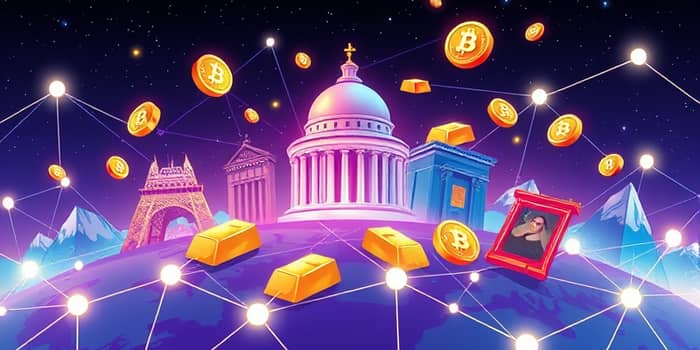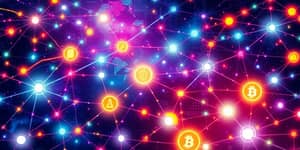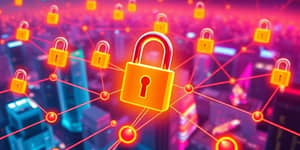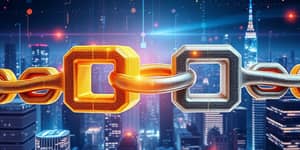In an age where digital innovation meets tangible wealth, the tokenization of real-world assets is reshaping investment landscapes. By converting physical rights into digital tokens on a blockchain, this transformation offers unprecedented access and flexibility.
From high-end real estate to rare collectibles, blockchain enables a global marketplace where assets can be fractionally owned, traded, and managed with a level of transparency previously unimaginable.
The Fundamentals of Asset Tokenization
At its core, tokenization is the process of representing ownership rights of a real or digital item as a cryptographic token. These tokens exist on blockchain networks, serving as immutable and transparent transaction records that mirror the value and characteristics of the underlying asset.
The process typically begins with asset selection and legal framework establishment. Issuers must choose the asset—be it a skyscraper, a fine art piece, or a bundle of government bonds—and navigate relevant securities or commodity regulations.
Next, token specifications are defined: fungible tokens (identical and divisible) follow standards like ERC-20, while non-fungible tokens (unique and indivisible) use ERC-721 or similar protocols. Finally, a suitable blockchain—Ethereum, Binance Smart Chain, Tezos, or even permissioned ledgers like Hyperledger Fabric—is selected to mint and deploy the smart contracts that govern token behavior.
Evolution and Growth in Tokenization
The journey of asset tokenization traces back to early experiments in digital securities. Initial pilots focused on narrow asset classes, such as tokenized shares in private equity or limited-edition artwork, to demonstrate feasibility.
Over time, innovations in oracle technology—exemplified by Chainlink Proof of Reserve—enabled robust integration of onchain and offchain data, ensuring that each token remained fully backed by audited reserves or legal titles. This breakthrough accelerated institutional interest, with banks, asset managers, and even sovereign entities launching their own tokenization pilots.
- Early digital securities offerings (2017-2019)
- Integration of decentralized oracles for asset verification
- Launch of public and private tokenized bond programs
- Expansion into commodities and real estate markets
Benefits and Innovations
Tokenization delivers a host of advantages that revolutionize traditional finance. Most notably, it provides enhanced liquidity and global market access, allowing investors to trade fractional interests in high-value assets around the clock.
Automated smart contracts also enable programmable features such as royalties and governance. For example, art collectors can receive automatic royalty payments when a tokenized painting changes hands, while real estate investors can vote on property management decisions via onchain governance tokens.
- Fractional ownership of high-value assets unlocks liquidity
- 24/7 trading across borders without traditional clearinghouses
- Reduced settlement times through automated smart contracts
- Increased transparency, lowering fraud and simplifying audits
Technological Backbone
Behind the scenes, robust blockchain architectures and middleware ensure reliable performance. Ethereum remains a leader, offering a well-established ecosystem and a rich library of smart contract templates. Meanwhile, alternatives like Binance Smart Chain provide faster transactions at lower fees, and Tezos offers onchain governance and formal verification of contract code.
Enterprises often choose permissioned platforms such as Hyperledger Fabric for private consortiums, benefiting from controlled participation and enhanced privacy features. Oracles like Chainlink bridge the gap between the digital ledger and tangible assets, feeding real-time price feeds, reserve confirmations, and compliance data directly into smart contracts.
Regulatory Landscape and Challenges
Despite its promise, tokenization encounters complex legal hurdles. One of the most pressing is defining the nature of tokens within existing frameworks: are they commodities, securities, or a new asset class altogether? Jurisdictions vary widely, with some nations adopting progressive regulations while others impose strict licensing requirements.
Establishing a robust compliance and legal structure is essential. Issuers must ensure KYC/AML procedures are in place, work with custodians to safeguard physical assets, and maintain clear documentation linking tokens to tangible holdings.
- Regulatory uncertainty across jurisdictions
- Complex KYC/AML and investor accreditation rules
- Technical challenges in onchain-offchain verification
- Security risks including hacking and custody failures
Real-World Use Cases and Market Trends
Industry reports estimate the tokenized asset market could reach hundreds of trillions of dollars in value as more asset classes come online. Pilot programs by large financial institutions, pension funds, and even sovereign wealth funds demonstrate accelerating adoption.
Retail investors, once sidelined from certain markets, are now gaining exposure to traditionally exclusive asset classes. Online platforms host token offerings, enabling small-scale investors to purchase a fraction of a $10 million property or a multi-ton gold bar.
Future Outlook and Conclusion
Looking ahead, the tokenization ecosystem will continue to evolve. Innovations in cross-chain interoperability, improved regulatory clarity, and enhanced custody solutions will drive broader market participation.
As protocols mature, we can expect novel financial instruments—such as hybrid tokens combining equity, debt, and governance features—and deeper integration with decentralized finance (DeFi) platforms. This convergence promises to unlock democratizing investment opportunities for all, reshaping how value is created, shared, and preserved.
Ultimately, tokenization of real-world assets stands at the frontier of financial innovation. By bridging the physical and digital realms, it offers a more inclusive, efficient, and transparent marketplace—empowering investors and issuers alike to participate in a global economy without barriers.
References
- https://chain.link/education-hub/real-world-assets-rwas-explained
- https://www.chainalysis.com/blog/asset-tokenization-explained/
- https://www.weforum.org/stories/2024/12/tokenization-blockchain-assets-finance/
- https://www.britannica.com/money/real-world-asset-tokenization
- https://chain.link/education/asset-tokenization
- https://www.rapidinnovation.io/post/asset-tokenization-step-by-step-guide-to-digitizing-real-world-assets
- https://www.coinbase.com/learn/crypto-glossary/what-are-real-world-assets-rwa
- https://www.mckinsey.com/featured-insights/mckinsey-explainers/what-is-tokenization










